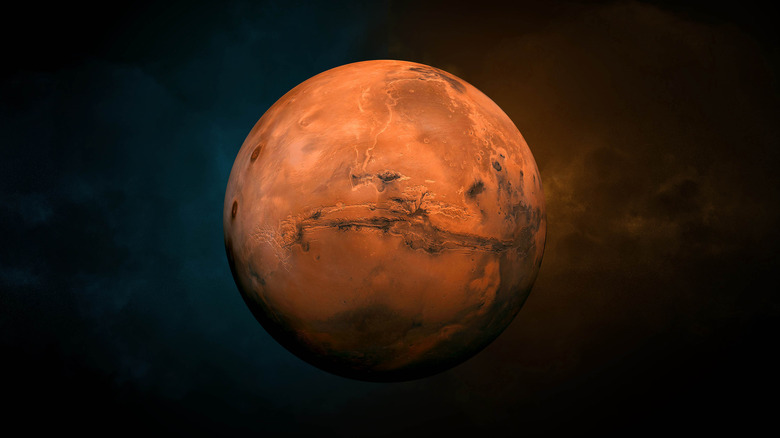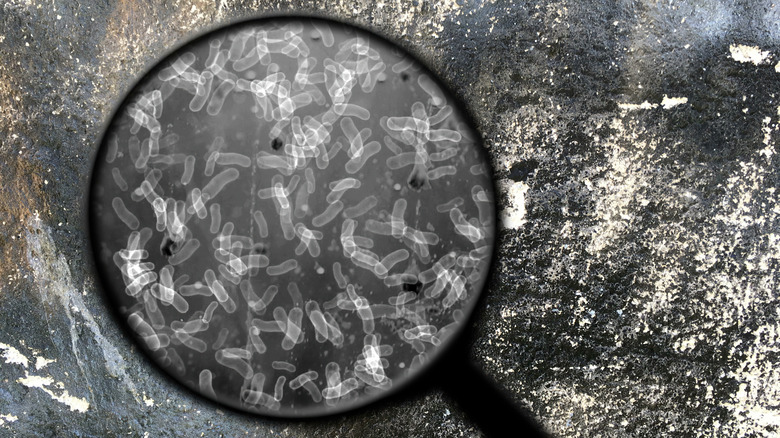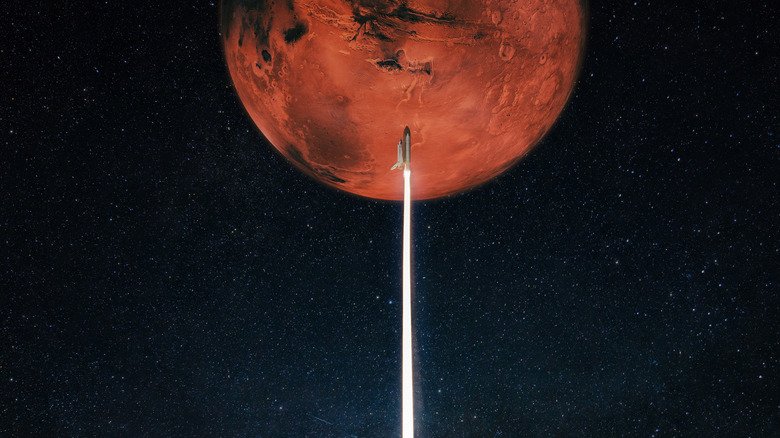How Early Life On Mars Likely Doomed The Planet
Mars: source of little green men tales, home to endless red sand dunes, habitat to roaming NASA rovers, wellspring of hope for evidence of extraterrestrial life, and a Roman god. Yes, Mars continues to inspire long after we've discovered not much there but a whole lot of rock and dust. And yet, even if we haven't found any ancient Martian pyramids, it's surreal to look at pictures from another world as though we're standing on its surface. NASA's Curiosity Rover has sent us such images from the red planet for over 10 years now, which is a good thing because, as Wired says, being on Mars would basically ruin a human body.
There are even some who believe that Mars once hosted life. And we don't mean upright, bipedal dudes waving to each other with sucker-tipped fingers and going "Bleep blorp!" in greeting. We mean a whole bunch of bacteria just beneath the planet's surface, as ABC cites. Not as exciting as ray guns, we know. And yet, as sites like Inverse explain, some scientists believe that those Martian bacteria might have been the source of life on Earth.
This is what researchers call "panspermia," the notion that Earth's molecular cocktail for biological life came from the stars: an asteroid, planetary collision, Mars, whatever. But is it possible that such microbial life might have not only created us, but doomed Mars itself? That's exactly what a new study published on Nature suggests.
Death by methane
It's interesting and ironic how the whole "former life on Mars" might have worked. So you know how greenhouse gases on Earth wrap our planet in a nice little heat blanket and cook us all alive? Yeah, that's what researchers believe happened to Mars. Except, it happened to that planet before there were some big-brained apes hanging around blasting air conditioning while drinking frappuccinos. Also, Mars' greenhouse gases didn't cook the planet, they cooled it. More on that in a bit.
The tale goes back to around 3.7 billion years, as Space.com explains, right about the time life was forming in the Earth's primordial ocean broth. Some inorganic molecules linked together, then linked some more, and presto: The first living, single-celled organisms. The same thing happened on Mars. But because of differences in the planet's atmosphere up to that point, Earth got all warm and cozy, while Mars got all cold and deathly. Microbes sucked hydrogen from the atmosphere and excreted methane, the stuff in cow farts that heats up the atmosphere 25 times more CO2, per the EPA.
However, despite being a more effective planetary blanket, methane disappears from the atmosphere in 10 to 15 years, as the European Commission says. So when the bacteria on Mars excreted methane into the atmosphere, it didn't interact with carbon dioxide the same way hydrogen does. Hydrogen and carbon dioxide together create a much more effective long-term planetary warmer. As a result, Mars got too cool, too fast.
Evidence of life
As Space.com describes, once Mars started cooling its bacteria receded deeper into Mars' crust, down to one kilometer deep (0.6 miles) — the deeper you go, the warmer it gets. The surface, meanwhile, would have chilled to a frigid negative 60 degrees Celsius (negative 70 degrees Fahrenheit). That's a nearly 80-degree Celsius (140-degree Fahrenheit) drop from its previous maximum temperature.
Lead researcher Boris Sauterey from the Institut de Biologie de l'Ecole Normale Supérieure (IBENS) in Paris, France states that Mars had liquid water on its surface at the time, including rivers, lakes, even maybe even oceans. When Mars' bacteria stripped the atmosphere of hydrogen and replaced it with methane that cooled the planet, all of its surface water would have frozen over. The bacteria that receded deeper into the planet would have found an alternative energy source. It's those bacteria that could have survived all the way until 280 million years ago, as EuroNews describes.
Sauterey also pointed out several locations on Mars' surface where bacteria might not have buried itself so deep in the soil. It'd be much easier to find evidence of their existence in these spots. Those locations include the Jezero Crater, Hellas Planitia, and Isidis Planitia, the latter two of which are plains. NASA's Perseverance rover is doing the on-site investigative work that makes the hunt for bacteria possible. Fingers crossed — we just might wind up finding life on our red, galactic neighbor after all.


